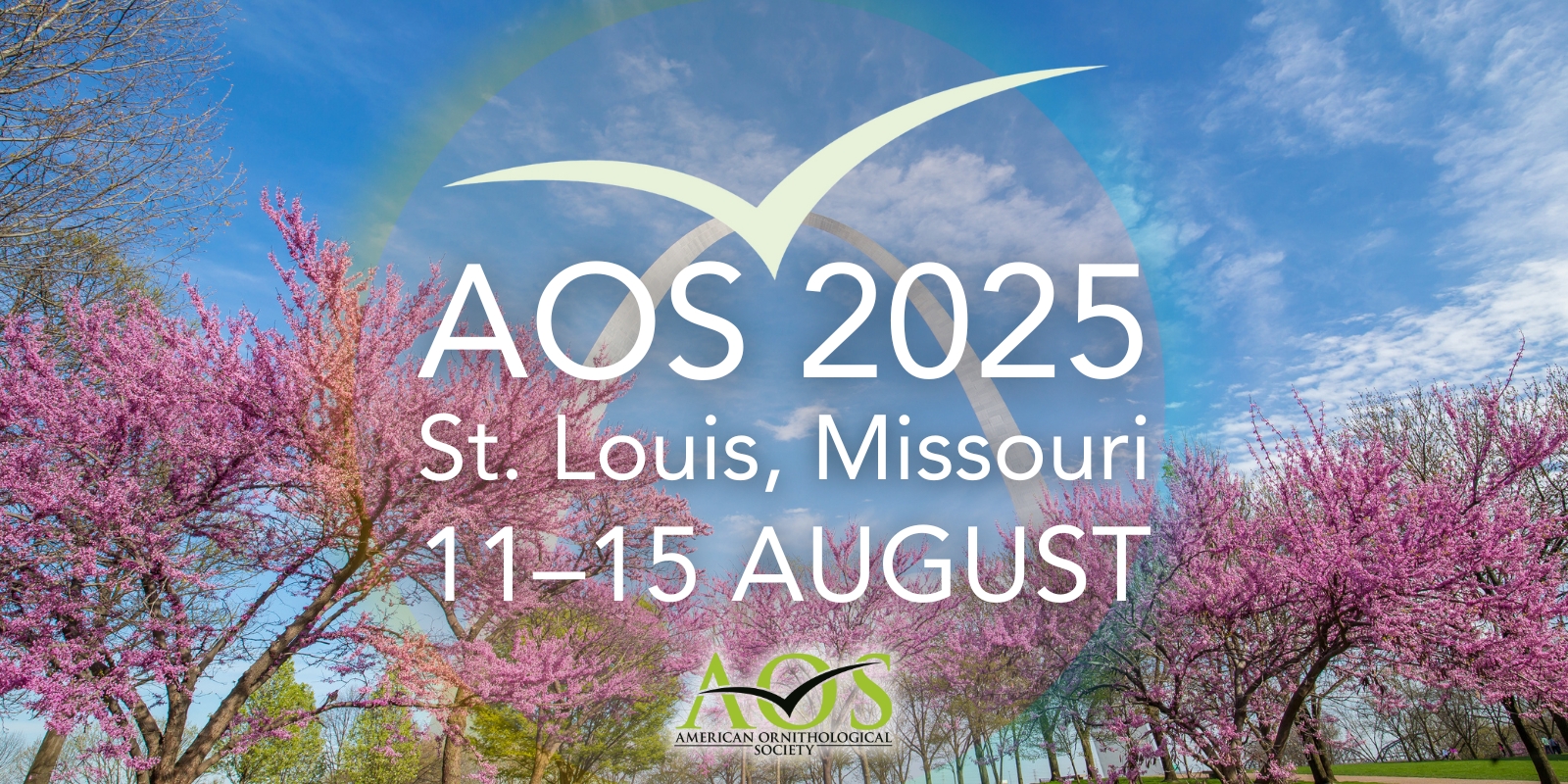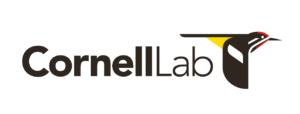AOS 2025 symposia are an opportunity for an integrated synthesis of a new or timely topic that will have broad appeal at the meeting. The dates, times, and locations for each symposium will be posted closer to our meeting dates.
Acoustic Re-identification of Individual Birds
Organizers: Lauren Chronister, Samuel Lapp, Justin Kitzes
Since the beginning of avian bioacoustics, an interesting phenomenon has been observed: individual birds often have unique acoustic signatures which are recognized both by humans and conspecifics. Acoustic signatures, like colored or numbered leg bands, could serve as markers of individual identity (IID) which would offer great opportunities for researchers to study birds by passively re-identifying individuals. Acoustic IID might also be used in combination with passive acoustic monitoring and modern acoustic analysis tools to enable the detailed study of individual birds’ lives at previously infeasible scales. For instance, automated acoustic IID could be used to non-invasively estimate abundance and annual survival as well as to study behavior and movement across large spatial and temporal scales without direct human observers. Despite its promise, acoustic IID in wild bird populations presents daunting challenges and has rarely been achieved. This symposium focuses on the challenges involved with acoustic IID, current advancements in automated acoustic analysis for IID from across disciplines, and cases where acoustic IID was leveraged to yield ecological insights about birds. Specifically, this session will begin with an overview of the problem of IID of birds from their sounds, then provide four case studies leveraging automated or manual acoustic IID to study wild bird populations. We conclude with a 15-minute panel discussion.
Cooperation Under Pressure: Insights from Cooperative Breeding Birds Amid Environmental Change
Organizers: Lauren D. Pharr, Sarah Beres
Cooperatively breeding birds offer a unique lens to study ecological and social dynamics, providing critical insights into how animals adapt to environmental pressures and fluctuating resources. These systems, where individuals delay independent breeding to assist others, challenge traditional reproductive models and highlight the interplay between behavior, ecology, and evolution.
In the face of rapid global change, cooperatively breeding species act as indicators of resilience and vulnerability. Climate change, habitat fragmentation, and resource variability reshape their environments, affecting group dynamics, reproductive success, and survival. This symposium will unite experts to explore cutting-edge research on cooperative behaviors mitigating environmental stress, the genetic and evolutionary mechanisms driving sociality, and conservation implications for these species.
Through synthesis and discussion, the symposium emphasizes integrating behavioral ecology with broader environmental frameworks, fostering collaborations that advance scientific understanding and conservation efforts. By showcasing the latest research, we position cooperative breeding birds as models for addressing urgent questions about adaptation, resilience, and biodiversity in a changing world.
Birds on the Front Line: Behavioral Strategies for Coping with Rising Temperatures
Organizers: Elizabeth Derryberry, Kimberly Rosvall
As global temperatures rise, birds face unprecedented challenges to survival and reproduction. Escalating heat already drives mass mortality and widespread sublethal effects. Scientists have long argued that behavior is key to resilience, and research on avian responses to heat is rapidly expanding. Now is the ideal time to convene a symposium to synthesize perspectives, methodologies, and future priorities.
This symposium integrates proximate and ultimate perspectives to examine how behavior buffers against and drives adaptation to climate change. We expand the scope of heat-related behaviors beyond thermoregulation to include parental care, aggression, and communication, while broadening inquiry beyond arid-adapted species to birds in mesic regions, where rising and variable temperatures pose significant but underrecognized challenges. Talks will showcase diverse methodologies, from experimental and field studies to comparative analyses and predictive models linking behavioral plasticity with population resilience.
The behavioral responses of birds to climate change have broad implications for resilience, adaptation, and conservation. Recent conferences (AOS, ABS, SICB) have seen exponential growth in research on birds and heat, yet many researchers work in isolation. By uniting experts across subdisciplines, this symposium will advance integrative research and interdisciplinary dialogue at the forefront of avian science.
Up in Smoke: Impacts of Wildfire Smoke on Birds Across the Life Cycle
Organizers: Megan Miller, Olivia Sanderfoot, Claire Ramos, Morgan Tingley
As global wildfire activity intensifies, people and wildlife are increasingly exposed to harmful smoke pollution. Wildfire smoke can be transported hundreds of miles, posing risks to birds both near to, and far from, the flames. Birds are more vulnerable to smoke than other taxa due their highly efficient respiratory system. Yet, we have only just begun to uncover how birds respond to smoke disturbance. Emerging research suggests that smoke exposure could have widespread impacts on birds, ranging from declines in body condition to shifts in migratory routes. The ways birds respond to and cope with smoke likely depend in part on the timing of smoke events relative to their phenology. As the fire season lengthens, it is important to understand how smoke impacts birds at different life history stages.
In this session, we will explore how birds respond to wildfire smoke across their life history. Talks will showcase research on the effects of smoke on bird health, behavior, migration, and breeding success. Our goal is to bring focus to an urgent and under-studied research topic and connect the few and far-flung researchers working to address critical knowledge gaps.
The Optimisymposium: Part II
Organizers: Sarah W. Kendrick, Nicole Michel
Full Description: The magnitude of the threats faced by birds at local and global scales is daunting and can leave conservation professionals and the general public feeling bereft of hope. Nevertheless, professionals need some positivity and reminders of conservation successes to operate effectively and continue their work, and support from the public for avian conservation is reliant in part on positive messaging. This symposium will highlight habitat, population, and species-wide conservation successes for birds across the Americas to reinforce that conservation can work in the Anthropocene. Presentations will highlight conservation wins and demonstrate the effective intersection of research, stakeholder engagement, and management.
Note: The inaugural Optimisymposium was held at AOS 2024; the symposium was at full capacity and we received incredibly positive feedback from attendees that it provided them a hopeful boost throughout the conference.
Linked Fates: Bird-Insect Interactions as Keys to Understanding Avian Ecology and Conservation
Organizers: Grant C. Witynski, Michael P. Ward, Thomas J. Benson, Alexa Rojas
Over the past half-century, both birds and insects have experienced declines at huge scales, pervading diverse species and biomes. Insectivorous birds have suffered acutely from these losses, likely due to reductions in prey availability compounded by other threats like changes in climate and habitat availability. These changes, in combination with agricultural practices such as overapplication of pesticides, are also frequently pointed to as drivers of insect declines. While damaging to many native insects and birds, climate and land use change also provide opportunities for generalist crop pest insects to expand their territory and develop pesticide resistance, further endangering native insects and exacting a large economic toll. Despite the challenges that birds and insects face, changing conditions and new technologies also mean a deeper understanding of their interactions is increasingly possible. For example, the expansion of crop pests also raises the potential for pest control by birds at new scales and in new systems. New information and techniques, such as fecal DNA metabarcoding and improved pesticide screening, give unique insight into bird-insect interactions. This symposium will explore how opportunities such as these can help us understand the ecology and conservation of birds and insects in an inhospitable world.
Waterfowl Science and Conservation — A Historical Legacy at Risk
Organizers: Mike Brasher, J. Brian Davis
Historical investments in waterfowl research were instrumental in developing ecological theory and shaping science-based conservation. Waterfowl and wetland birds are among the few groups whose populations have increased since the 1970s, standing as an example of conservation success. In recent decades, however, the connection between waterfowl-focused research and broader ornithological communities has waned. This disconnect is of increasing concern, however, as habitat losses continue and emerging data signal declines for species once considered healthy. This symposium will foster greater collaboration and knowledge exchange between waterfowl ecologists and the wider ornithological community, leveraging collective expertise to address complex conservation challenges. This session will: 1) Highlight the historical importance of waterfowl research and population management in avian science and conservation, including key funding mechanisms and international conservation partnerships, 2) reflect on historical successes and discuss emerging challenges to waterfowl populations and their habitats, 3) highlight new collaborations that are bridging the gap between traditional waterfowl-focused science and the broader avian science community, and 4) catalyze innovative partnerships among the avian science and conservation community to address increasing complex drivers of bird population declines.



